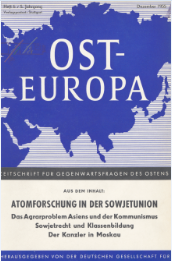

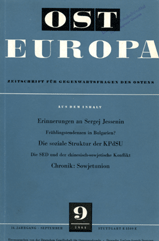
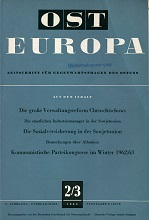
Die folgenden Beiträge enthalten vor allem Material zu den Dezemberunruhen des Jahres 1970 in Stettin, das den Zeitungen der Stadt entnommen wurde. Da die Dokumentation der blutigen Ereignisse in Danzig, die in „Glos Wybrzeza" (28.12. 1970) veröffentlich wurde, in mehreren deutschsprachigen Organen publiziert worden ist, bedeutet die jetzt vorliegende Sammlung eine wichtige Ergänzung des Bildes der folgenschweren Rebellion der Arbeiter in den polnischen Küstenstädten. Aus den folgenden Zeitungsberichten und Aufrufen an die Bevölkerung der Stadt Stettin wird deutlich, wie auch hier zunächst versucht wurde, die stürmischen Demonstrationen, die auch vor dem Parteigebäude und dem Gefängnis nicht Halt gemacht haben, vor allem dem „Abschaum der Gesellschaft" und „randalierenden Rowdies" aufzubürden. Bezeichnend, aber auch nicht neu, ist der Hinweis auf die Feinde Polens im Lande und außerhalb seiner Grenzen, auch in der Bundesrepublik, und deren angebliche Freude über die blutigen Dezember-Ereignisse. Bemerkenswert ist in den Aufrufen der Appell an die patriotischen Gefühle der Bevölkerung, die Berufung auf das Vaterland, auf die Heimat und auf Stettin, nicht aber auf die Partei, gegen die sich die Empörung der Bevölkerung in erster Linie richtete.
More...Vier Themen bilden den Inhalt der folgenden Dokumentation: Das Abitur an polnischen Oberschulen, die Aufnahmeprüfungen für die Hochschule, die begehrtesten Studienrichtungen und Probleme von Grund- und Oberschullehrern. Besonders bedeutsame Aspekte dieser Themenkreise sind in den Augen der polnischen Partei- und Staatsführung die Sorge um die soziale Zusammensetzung der Studierenden (mehr Arbeiterkinder zum Studium!), die sich heute bereits abzeichnende "Überproduktion " von Hochschulabsolventen, die Flucht der Lehrer aus ihrem Beruf sowie die parteipolitische Arbeit in der Schule.
More...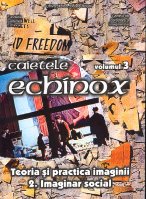
Keywords: 9/11; Mass media; "New-York Times"; political cartoons; terrorism
This study analyses the political cartoons published in the "New York Times" since the terrorist attacks against the Twin Towers. It also emphasizes the ideological constructed image of the social and political reality through the satirical cartoons.
More...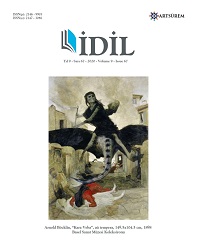
Keywords: Viola; concerto; form; character; analyse; Neo-Romantic;
Considered one of the most important composers of the 20th century, Krzysztof Penderecki's "Concerto for Viola and Orchestra" is a contemporary piece composed in Neo-Romantic style. This concerto, written in the sonata form, follows a structure in which two themes, given in contrast to each other in tempo and character, develop and maintain the same motif materials throughout the work. These motifs, developed in the form of minor 2nd and minor 3rd narrow intervals, create a gloomy and depressing atmosphere that dominates the general character of the work. Time measures frequently change throughout the work. The bar-lines have been completely removed in two Cadenza parts and some solo viola passages in order to give freedom to the performer.
More...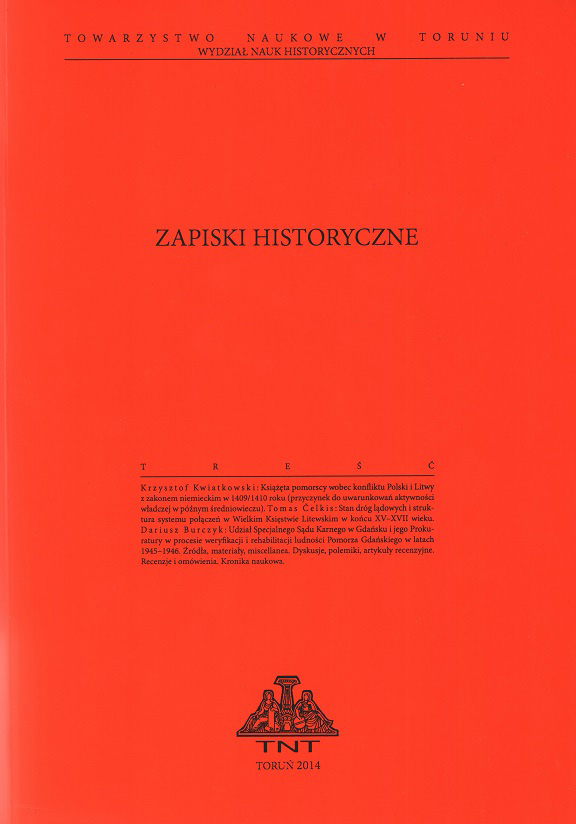
Keywords: craft guilds; handicraft; art of the early modern period; goldsmiths; Royal Prussia
The early modern goldsmithery in Chojnice (Konitz) has so far been outside the main area of scholarly research. The search in archives and libraries conducted for the purposes of the article, as well as the analysis of preserved works crafted by local masters, has therefore brought a lot of new, previously unknown information on the subject. Chojnice is a typical, small centre of goldsmithery, which remained overshadowed by Gdansk, a powerful hub of crafts located nearby. For nearly whole of the eighteenth century only a single workshop operated in the town, and a new master usually appeared only after the death of his predecessor. The research yielded information about five goldsmiths operating in Chojnice in that century, as well as one apprentice who died before becoming a master. Nearly all of them were connected by various family ties. Only a few works of art created in the Chojnice workshops were identified, but they bear the signatures of only two masters who were active in the last third of the eighteenth century. Johann Friedrich Felsch I (1744–1808) made several items for the churches nearby: an incense boat in Chojnice, a monstrance in Bysław, a monstrance base in Wiele and a reliquary cross in Tuchola, as well as a set of six spoons, currently stored in the collection of the Malbork Castle Museum. It is worth noting that his works, apart from the master’s mark, bore a sign that proved he was a member of the guild of goldsmiths in Malbork. Johann Gottlieb Jantzen (1742–1772), Felsch’s brother-in-law, delivered a monstrance to the church in Jeleńcz (now in Tuchola), and a frame for the worshipped statue of the Blessed Virgin Mary to the Bernardine Church in Zamarte (now missing). All these items represent an average level of artistry, and show considerable dependence on the style developed by the masters from Gdansk, where both goldsmiths active in Chojnice studied their craft.
More...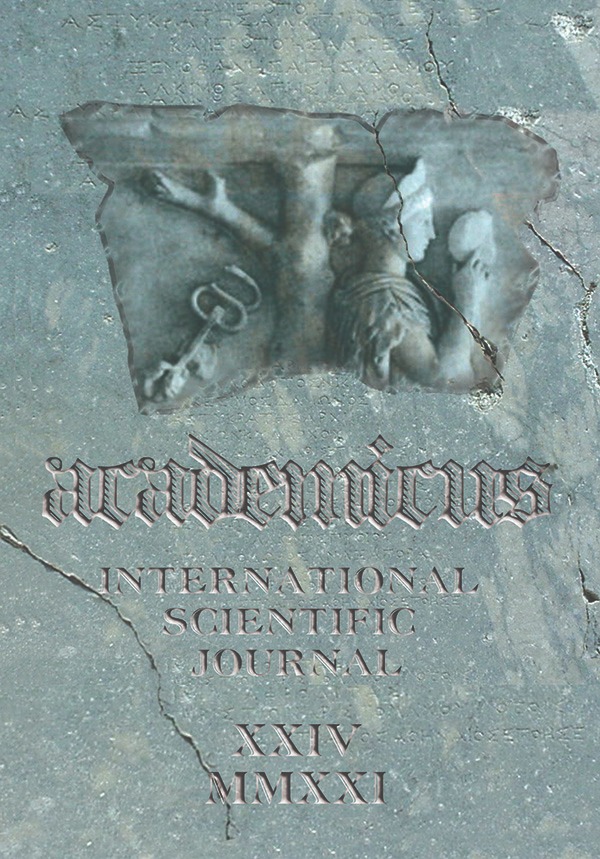
Keywords: Ideological utopianism; personalistic leadership; social process; rational analysis;
The main contention of this paper is that the eventual decline of ideology would pave the way to personalism and piece-meal policy-making. In this respect, sociology should analyze the process of social evolution while the ideological goals tend to concentrate on the middle-range and distant future.
More...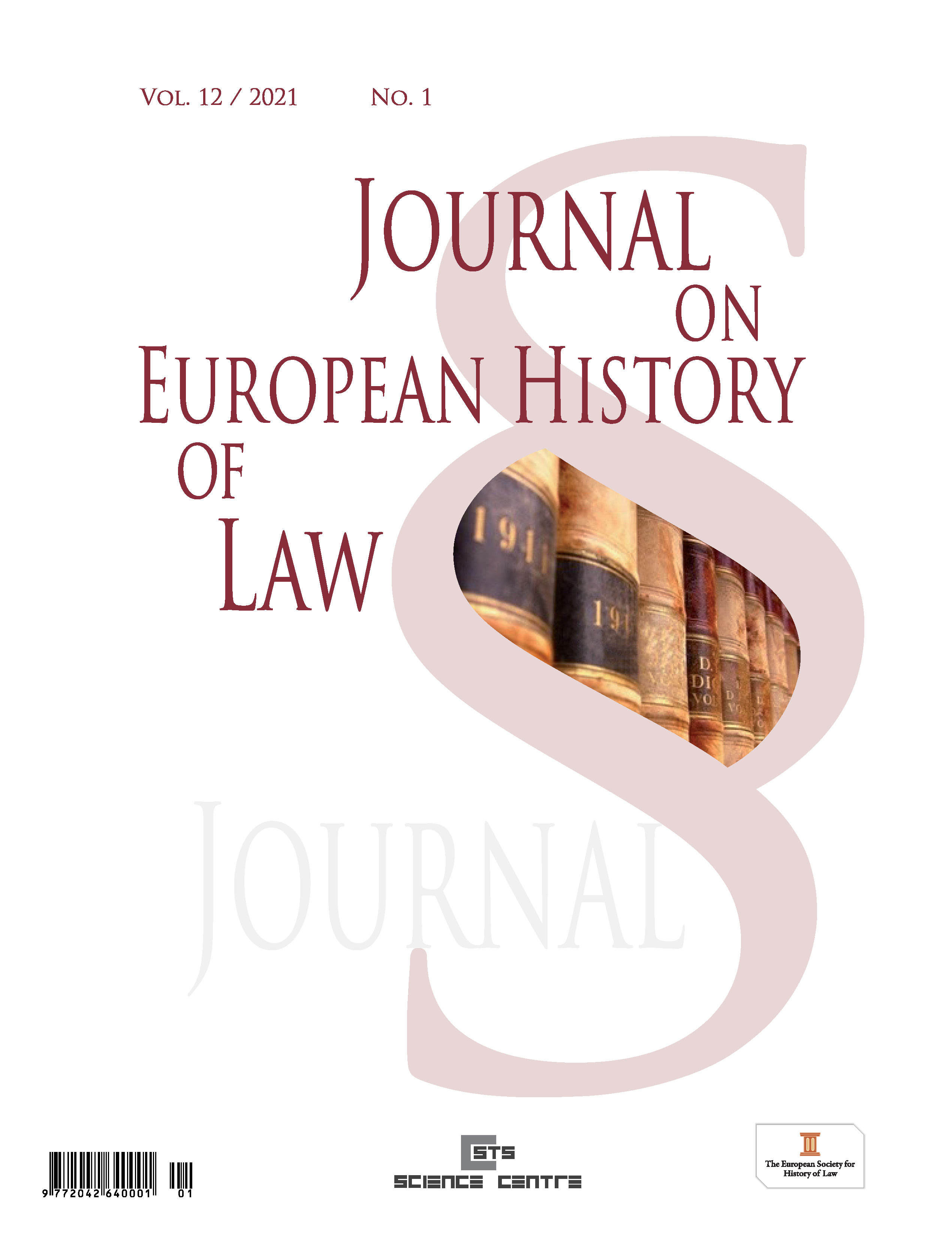
Keywords: Tomasz Dolata: The Impact of the Germanic and Romanesque Model of Combating Unfair Competition on the Legislation in Inter-War Poland (1918–1939) The first country that decided to regulate the issu
The first country that decided to regulate the issues of combating unfair competition in a specific statute dedicated to this phenomena (1896) was Germany. The so-called criminal method of regulations was used. Other legislations, including but not limited to, Austrian, Czechoslovakian, Norwegian or Yugoslavian followed the German model. A completely different system was introduced and developed by the French lawyers who relied on the civil concept of combating this phenomenon. A characteristic feature of the French solutions was the lack of a specific statute devoted to the repression of this phenomenon. In addition, by way of skilful application of the provisions of the Napoleon Code the French case law and doctrine have construed a very comprehensive model for combating unfair competition. This model was based on the subjective right, which was the right to clientele. All actions violating the subjective right sanctioned by the Act were unlawful and constituted the basis for initiating a civil complaint, i.e. for instigating claims against the infringer. The French model constitute inspiration for, among others, Belgian, Italian, Spanish and Bulgarian legislation. The first Polish Act on Combating Unfair Competition of 1926 combining both the French and German model of combating this phenomenon seems interesting. However, an attempt to simply assign the Polish statute to the French or German model must prove unsuccessful because the Polish legislator, while devising the Polish law, reached for legal measures characteristic for both the French and German structures of repression of this phenomenon. This is the civil method of combating unfair competition based on the relevant subjective right–the ownership right in an enterprise as an intangible asset which is common to the Polish and French model, while the German model has been brought closer to the Polish law due to the concept of regulating this phenomenon by means of a specific statute, casuistic list of unfair competition activities supported by the use of general clauses, a separated criminal-law part in the Act containing a similar catalogue of offenses set out in the Act.
More...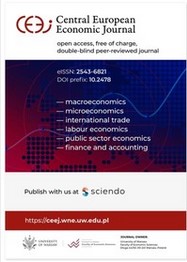
Keywords: fertility; women’s labour force participation; motives for work; qualitative interviews; transition economies; Central and Eastern Europe;
This article provides insights into employment decisions of mothers and mothers-to-be in a post-socialist Poland around the entry to the EU. Previous studies for this country continuously pointed to a strong determination among mothers to be employed during the economic transformation, despite increasing obstacles to combining paid work with childrearing over the 1990s. We analyse in-depth interviews to explore women’s motives to work for pay. We investigate how these motives are related to women’s childbearing experiences and intentions. Our analyses show that motherhood was central in women’s lives at this point in Polish history, but females sought to combine it with employment. We also find that women’s perceptions about their ability to balance work and motherhood were strongly related to the meanings that they attached to paid work.
More...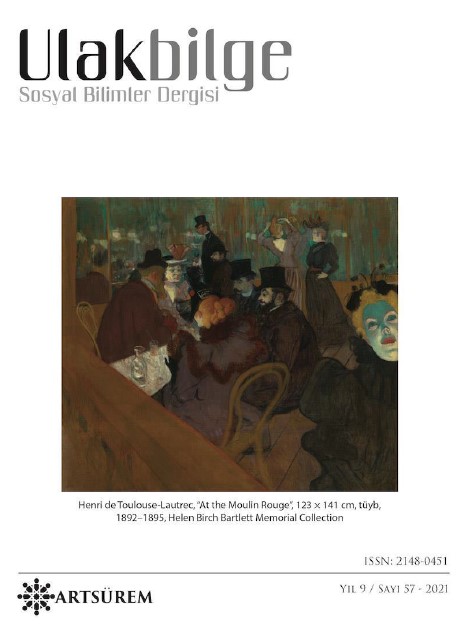
Keywords: Digital media; early childhood education; preschool education; educational program;
Our world is becoming more digital, interactive, and online, and digital media is becoming more common in our daily lives. As a result, countries aim towards new training strategies to address this development appropriately. The goal of this study is to examine the “Digital Media in Early Childhood Education Program” developed and implemented as a result of a two-year model project in North Rhine-Westphalia, Germany. The document analysis method was used to examine the program and obtained data was reported using the content analysis method. The program was translated from German to Turkish by the researchers. The Digital Media in Early Childhood Education Program generally consists of four main sections, followed by study materials and sample applications. Digital media education is about addressing children's interests and needs, rather than creating as perfect media content as possible. If digital media education is understood as “we have to teach children how to use digital media”, then the reservations of education professionals can be entirely understandable. Because this understanding incorporates a problematic reduction of education to the use of the media and contradicts basic pedagogical requirements such as the relevance to a specific situation and context, the significance for implemented pedagogical concepts, and the individual child's needs. Therefore, the “Digital Media in Early Childhood Education” program is focusing on educating educators for the reflective placement of media education in everyday life to overcome this misunderstanding. The goal of the model project and program is to develop and test the structural and content-related conditions for the age-appropriate and pedagogically sensitive use of digital media in preschool education institutions. The program with the included materials and sample applications, which consist of comprehensive information about digital media education in early childhood, is a guide to institutions, teachers, and researchers.
More...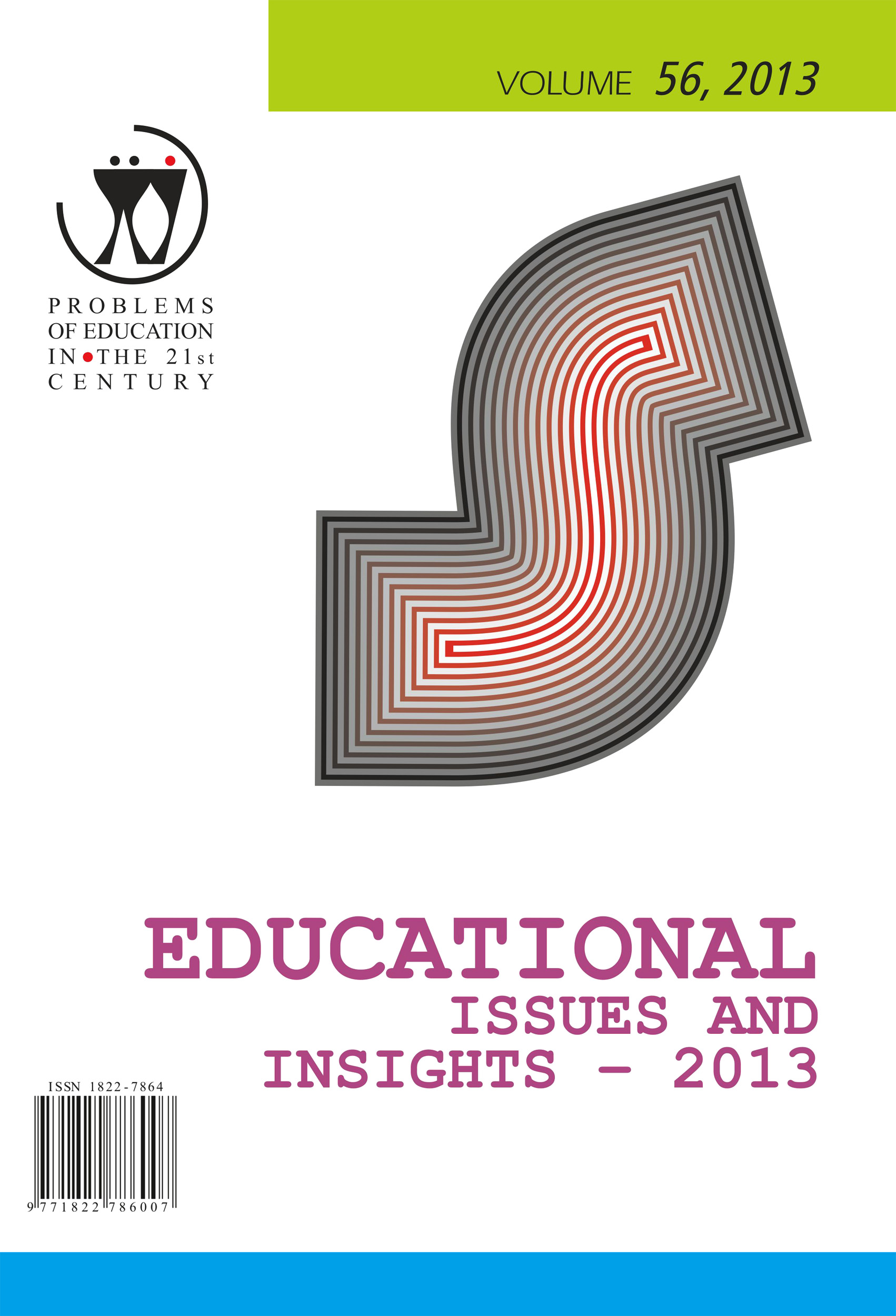
Keywords: academic satisfaction; architecture; classroom; design studio; learning environment; social-academic climate
The social climate created in the classroom has been recognized to have important implications for learning. This study was motivated by the explore how design students in the design studio compared to other other architectural courses view their social-academic climate. Despite the role played by social climate in classroom, some have argued that classroom climate has been largely ignored in studies of higher education and most studies on classroom climate explore the perceptions of teachers rather than views of students themselves. The present study focuses on social-academic climate and its significance in architectural studies and its effect on academic satisfaction.A survey was conducted of students of architecture, following an approach developed by Moos (1970), who claimed that behavior is largely affected by environmental and situational factors. The model he constructs presents social climate as a product of bilateral pressure systems - environmental pressures that affect the individual, and pressure that the individual exerts on his or her environment. This study evaluates social-academic climate and academic satisfaction in an academic architectural program, focusing on a comparison of perceptions of students in the design studio and traditional classes, based on the eight dimensions proposed by Moss (1979). Findings shed light on the importance that students attribute to the measures of social-academic climate. These factors (specifically, students' involvement, competence, innovation, and teacher support) were rated higher in the design studio than in the courses. Social-academic climate measures such as involvement, order and organization, teacher's control, and orientation of the learning material were higher in the first year than in more advanced years. Academic satisfaction was higher in the first year design studio. Ratings of order, organization, and teacher support were the major predictors of students' academic satisfaction with the architectural program.
More...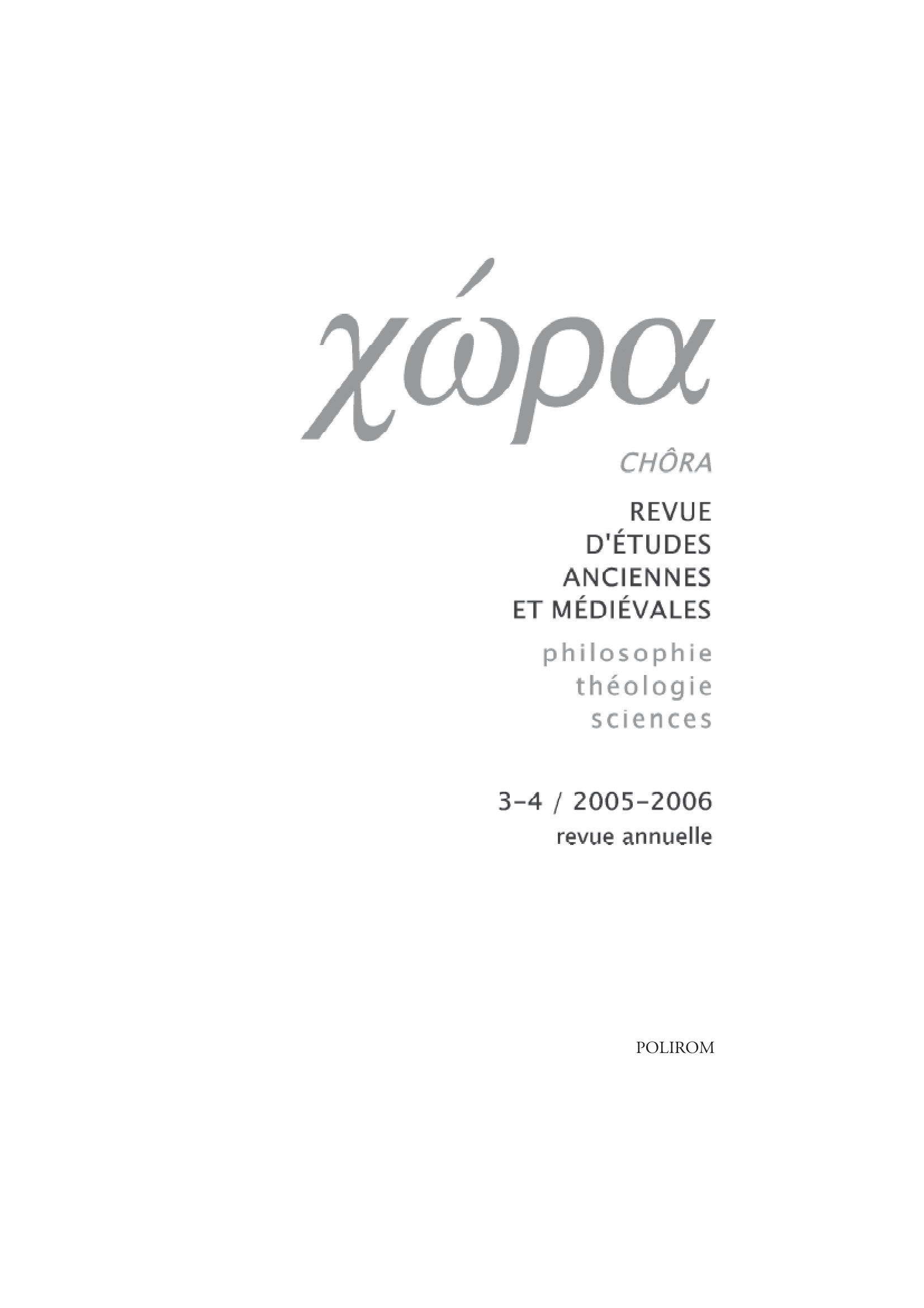
Keywords: Review;
Otfried Höffe (hrsg.), "Aristoteles-Lexikon", by Elisabeth Schmit (german) Vasile Muscă, "Discurs despre filosofie", by Alexander Baumgarten (german) Guy Bouchard, "Les bœufs bipèdes. La théorie aristotélicienne de l'esclavage et ses interprètes francophones", by Adela Cîmpean (english) Jean-Marc Narbonne, "Lévinas et l'héritage grec", Wayne Hankey, "Cent ans de néoplatonisme", by Dan Săvinescu (german) Jean-Marc Narbonne et Alfons Reckermann, "Pensées de l'«Un» dans l'histoire de la philosophie. Études en hommage au Professeur Werner Beierwaltes", by Dan Săvinescu (german) Oya Erdogans, "Wasser - Über die Anfänge der Philosophie", by Alina Noveanu (german) Cătălin Partenie (ed.), "Plato. Selected Myths", by Andrei Bereschi (english)
More...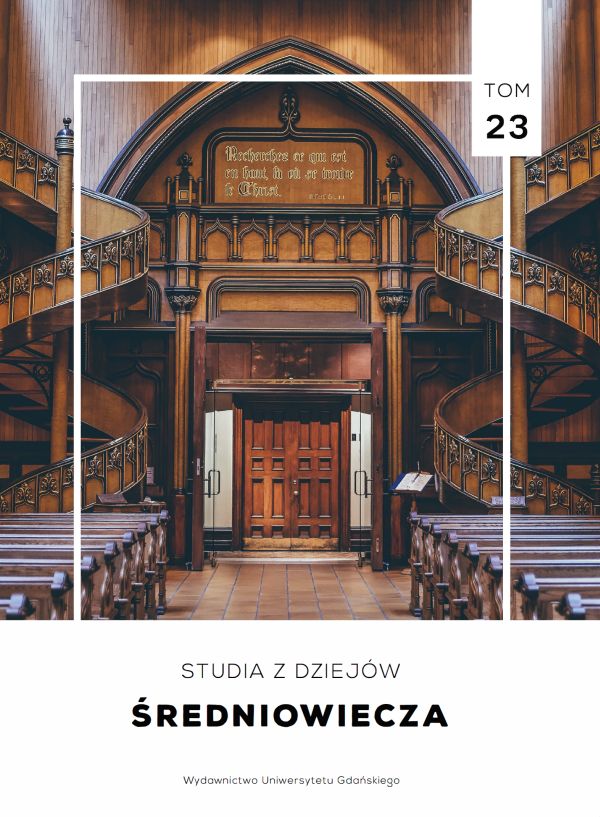
Keywords: Oliwa; monastery; abbey; etymology; name; Cistercians
At the end of the 12th century, the regent of Pomerelia Sambor I founded a Cistercian monastery near Gdańsk. The monks, who came there from their home monastery in Kołbacz, called the new monastery “Oliva”. In the Cistercian tradition, this name referred to the Biblical symbol of the olive tree. Historians favour an allegorical etymology of the monastery’s name, but some scholars attempt to link it to the symbol of the Mount of Olives. In the 20th century Polish linguists put forth a hypothesis about the Slavic provenance of the monastery’s name. Reconstructed as “*Oława”, it was supposed to be a river name. According to this hypothesis, the name “Oliva” is supposed to have resulted from the Cistercians changing the original name due to a phonetic association with the Mount of Olives (“Montes Olivarum”). However, not only the absence of the supposed original name in the source texts speaks against this hypothesis, but also the Cistercian custom of giving monasteries completely new names, often allegorical. The authors of the hypothesis also completely disregarded the meanings the Cistercians were giving to Biblical symbols. What is especially important in this case is the relation between the olive tree and the monastery’s patrons: the Blessed Virgin and Saint Bernard of Clairvaux.
More...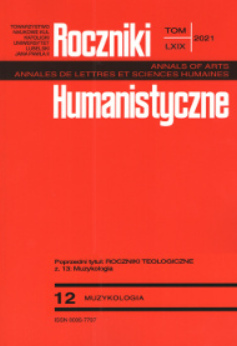
Keywords: Mass; ordinarium Missae; St. Anne; sacred music;
As devotion to St. Anne developed in the West from the 14th century onwards, it became associated with liturgical works, including musical compositions. These include the propria of Mass: alleluia acclamations with verses and sequences, and, above all, numerous motets (Festa, Senfl, Mouton, de Mantua, Lhéritrier, di Lasso, Charpentier). This article, however, focuses only on selected Masses, which, in their musical forms, are associated with the name of Jesus’s Holy Grandmother. This collection includes compositions by such artists as Pierre de la Rue, Marcin Mielczewski, Josef Gruber, Kazimierz Garbusiński, Charles Haenni and Richard Flury. An interesting discovery was made regarding 20th-century and contemporary Masses connected with the Breton sanctuary in Saint-Anne-d’Auray (Brittany). References to Gregorian chants and Breton religious songs (Ropartz, Le Penven, Salaün, Le Marec) have been found there. Contemporary Masses by Peter F. Schneider, based on a German ordinarium, and compositions by the Polish composers Joseph Świder and Anna M. Huszcza have also been linked to the name of St. Anne. These are all important testimonies to the vitality of Christianity in the musical culture of the past and present.
More...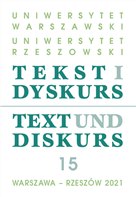
Keywords: parish register; text linguistics; text; textuality
More...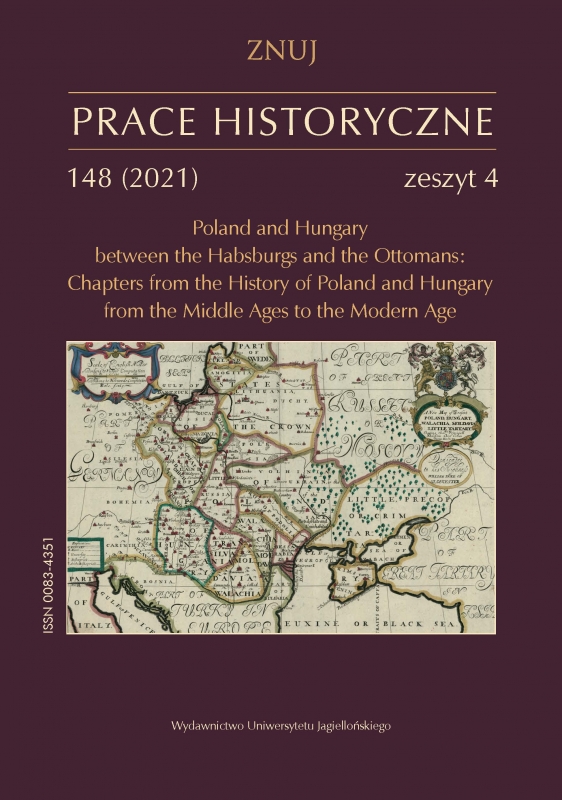
Keywords: Stephen Báthory; Gáspár Bekes; Ferenc Wesselényi; polish royal court; Polish-Lithuanian Commonwealth; foreigners at the royal court; 16th century
This article is about the career and political positions of Gáspár Bekes and Ferenc Wesselényi in the Polish-Lithuanian Commonwealth during Stephen Báthory’s reign. It explains how they both achieved their positions and why they were important for the monarch. It should be emphasised that both of them are a good example of how the elected Polish king could help foreigners in their career in 16th century Poland. On the one hand, Gáspár Bekes achieved his position by serving in the army before and during Báthory’s wars, on the other hand Ferenc Wesselényi played an important role as a holder of a high office at the Polish royal court.
More...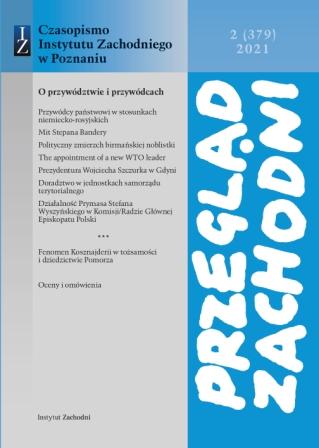
Keywords: Reviews; Book-Reviews; Political Sciences; History; Social Sciences;
PAWEŁ POPIELIŃSKI: Mniejszość niemiecka w III Rzeczypospolitej Polskiej (1989-2019) w procesie integracji ze społeczeństwem większościowym, Wydawnictwo Instytutu Studiów Politycznych PAN, Warszawa 2020, 514 ss. (Katarzyna Gelles) Ziemie Zachodnie i Północne (1945-2020). Nowe konteksty pod redakcją Małgorzaty Bukiel, Andrzeja Saksona, Cezarego Trosiaka, Instytut Zachodni, seria Ziemie Zachodnie – Studia i Materiały nr 29, Poznań 2020, 415 ss. (Ewa Kurzyk) ROMAN DZIERGWA: Przerwany bieg po żelaznej drodze. Kolej Powiatowa Ostrzeszów-Namysłaki, jej czasy i ludzie w aspekcie historycznym i kulturowym, ANC Ostrzeszów/Namysłaki/Poznań 2020, s. 276. (Andrzej Denka) EWA KOBYLINSKA-DEHE, PAWEL DYBEL, LUDGER M. HERMANNS (Hgg.), Wiederkehr des Verdrängten? Psychoanalyse und das Erbe der Totalitarismen; aus dem Polnischen und Englischen von Bernhard Hartmann. Psychosozial-Verlag, Gießen 2020. 331 ss. (David Engels)
More...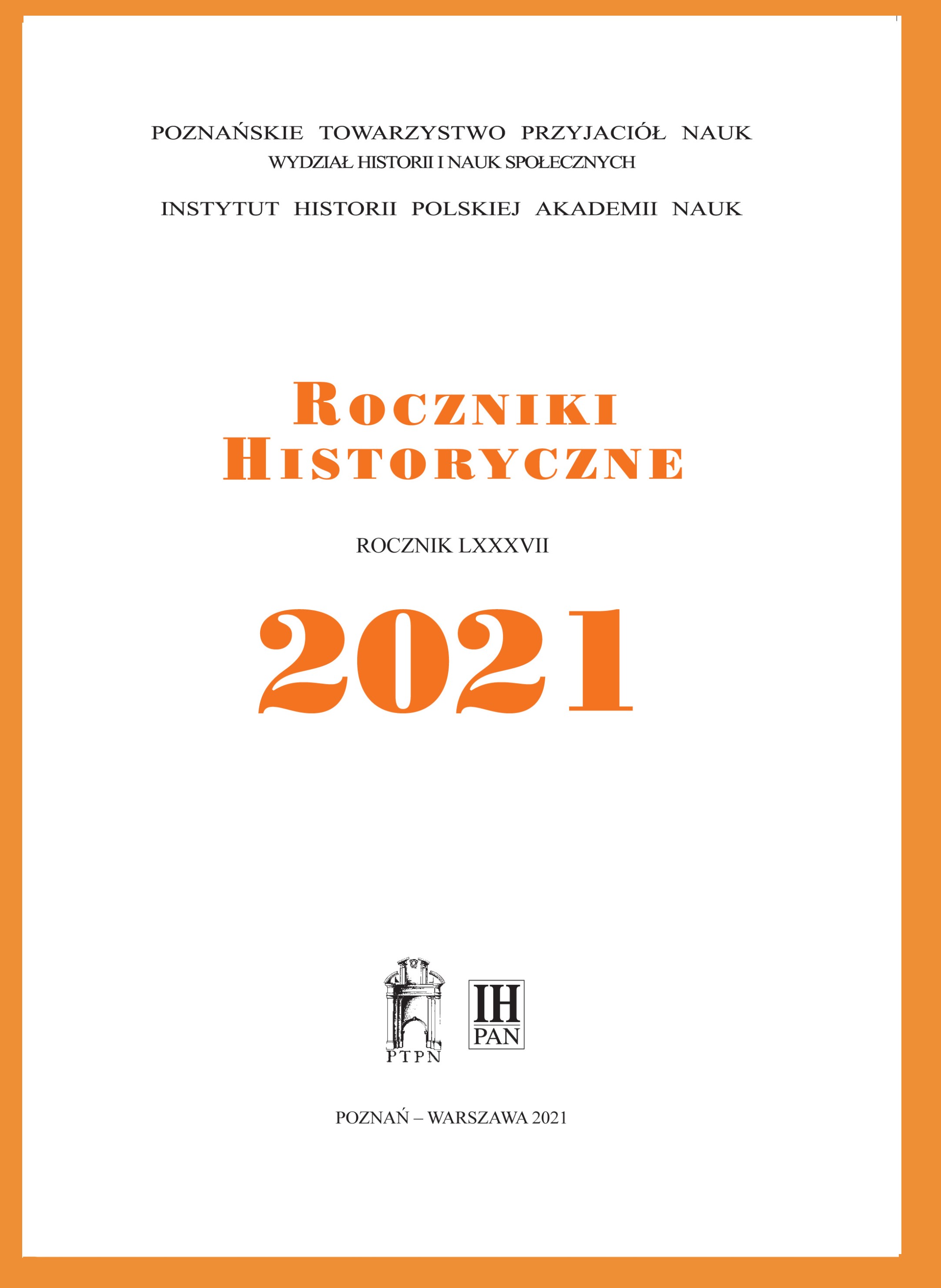
Keywords: Teutonic officials;
Sporządzanie wykazów dostojników i urzędników krzyżackich w państwie zakonnym w Prusach w średniowieczu ma już w historiografii długą tradycję. Zapoczątkował ją królewiecki badacz i archiwista, Johannes Voigt. Opublikowany przez niego w 1843 r. wykaz obejmował jednak wyłącznie dostojników szczebla centralnego oraz urzędników terytorialnych w randze komturów i wójtów do 1525 r. Z kolei Georg A. von Mülverstedt tworzył takie spisy urzędników terytorialnych (także niższej rangi) kilku wybranych terytoriów (w zasadzie do 1454 r.). Peter G. Thielen do swojej monografii o administracji krzyżackiej dołączył wykaz urzędników centralnych i lokalnych (ograniczony jednak do okresu od początku XV w. do 1466 r.). W 2000 r. spis obejmujący zarówno wysokiej rangi dostojników centralnych, jak i administratorów terytorialnych (komturów, wójtów i prokuratorów) od początku aż do 1525 r. opublikował Bernhart Jähnig. Wreszcie niedawno polski badacz, Maciej Dorna, w swojej pracy o prozopografii Zakonu w Prusach do 1309 r. zestawił wszystkich wzmiankowanych w źródłach urzędników z tego czasu.
More...